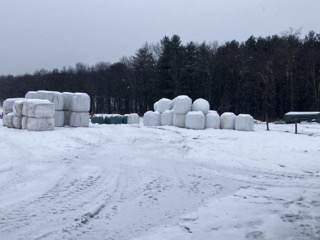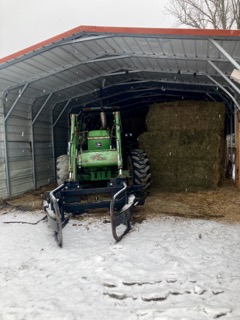Traditionally, and in many parts of the world still, milk production is and has always been seasonal.
Camels, which are one of the alternative species used for milk in the middle east, can get pregnant any time of the year, but they can only become pregnant every two years, which can lead to a gap in milk supply unless pregnancies are staggered accordingly.
Sheep and goats on the other hand, which are used for milk production in many areas of Europe and the United States for specialty cheeses and milk, can only become pregnant in a short window each year. Their reproductive cycles are so dependent on daylight hours, that the flock may become pregnant only in a short window of time allowing them only to kid out once a year, and typically all within the same 3 week window. This also means that the flock will typically all go dry around the same time of year- usually late fall.
There are advantages to seasonal milk production and kidding- it ensures that when babies are born in the spring there will be enough resources to feed and care for the young one thus giving them the greatest chance of being healthy and living a long and happy life. Additionally, the nutrition and feed needs of the flock through the winter are minimal which mirrors the availability of feed in the natural environment.
Most breeds of cows are not governed by daylight for their reproductive cycle and pregnancy. Like humans, they ovulate each month, and can get pregnant any time of the year. This means that we can stagger pregnancies in the herd to ensure we have new babies every season and can maintain milk production year round. Of course this only works if you are able to provide feed year round. In Ireland, and some other areas of the world, the climate and amount of agricultural land available does not permit harvest, or storage, of enough feed to provide for a herd of milking cattle. Ireland is a relatively small island compared to the US, agricultural land is limited, and during the warmer seasons it can be quite rainy, making it difficult to make hay and lay aside feed for the winter. For them it makes sense to maintain a seasonal milking herd.
In the United States, we deal with challenging weather as well, but we are a much larger country that is connected end to end by railroads and high traffic interstates. If we have a bad growing season it is relatively easy to source hay, balage, or other types of feed from neighboring farms, states, or further away if needed. Because feed is so much more readily available, and with a larger overall population to feed, it is extremely beneficial for us to be able to maintain milk production throughout the year. We are able to do that with the help of the natural biology of our cattle and the strong agricultural industry within the United States.
We are proud to be American Dairy Farmers, and we are proud to help feed our local communities.

